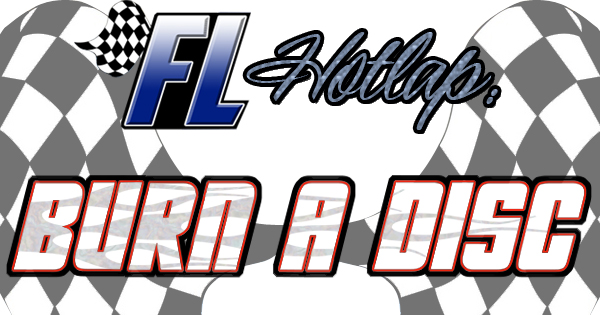
This week’s Finish Line Hotlap is hot! It doesn’t get much hotter than…burning discs! I can hear you grumbling from here. Believe it or not, burning a disc is a struggle for many people. On more than one occasion I’ve been hired to do what is often considered a basic task. If burning a CD seems daunting to you, be not afraid. Today we’ll include a brief overview of a couple of factors to consider when purchasing discs, and discuss the proper steps to ensure a successful burn. Time’s a ‘wastin’!
I don’t want to insult anyone’s intelligence here, but let’s start with the basics. When burning a disc, you must first decided whether to use a compact disc (CD), or a digital versatile disc a/k/a digital video disc (DVD). For the purposes of our Blog post, we’ll avoid putting videos on disc to be used in DVD players. For today, we’ll stick with simply storing files. A CD holds 80 minutes of audio or 700 megabytes (MB) of data, while a DVD stores 4.7 gigabytes (GB). 4.7 GB converts to roughly 4800 MB, so it’s easy to see just how much more space is available on a DVD. When buying either a CD or DVD, you’ll be faced with another decision: will you want to burn different files onto the same disc more than once? If so, buy a CD-RW or DVD-RW. The RW indicates that the disc is “rewritable” meaning files can be changed (added or removed) after an initial burn. A CD-R or DVD-R is “one and done”. It can only be recorded to once.
Say you want to put pictures from your nephew’s birthday party from your computer onto a disc. First. find where the pictures are stored on your computer. In modern versions of Windows, photos end up as part of the Pictures library by default. Click the “folder” icon in the taskbar at the bottom of the screen, then look for “Libraries” on the left of the screen. Click “Pictures” and your photos will be there. If the desired photos are in a folder, and you’d like to burn the entire contents of the folder, first right-click on the folder in the list, then left-click “Properties”. In the window that opens, look for “Size on disc”. If that number is less than 700 MB, you can use a CD. If not, you’ll need a DVD. Next, insert the blank disc of your choosing into the computer. An AutoPlay window will pop up on your screen asking what you’d like to do with your blank disc. Click the first option: “Burn files to disc using Windows Explorer.” Next, give your disc a title, then decide whether you’d like to use the disc “Like a USB flash drive” or “With a CD/DVD player”. Typically, if a disc I’m making is going to be used in any other computer than the one I’ve used to burn the disc, I’ll choose “With a CD/DVD player” so I know there won’t be a problem for anyone opening the disc in the future. Click “Next”. A window will open showing the contents of the disc (none). Go back to the folder containing your nephew’s birthday party pictures, and open it. Click “Organize”‘ in the top left corner of the window, then “Select All” to highlight all of the pictures in the folder. Click “Organize” once again, then “Copy”. Minimize that window, and you’ll be back at your blank disc. Click “Organize” one more time, and then click “Paste”. The pictures will appear under a title called, “Files Ready to Be Written to the Disc”. Next to “Organize” you’ll see “Burn to Disc”. Click “Burn to Disc” and your pictures will be written to the CD. When the burning process is finished, your CD will automatically eject from the computer signaling that the job is done.
Burning discs is a “use it or lose it” skill. People seem to forget how to burn discs if they haven’t done it in a while. As you can see, it isn’t difficult to write files to a disc, but there are several steps involved. Incidentally, the directions we’ve laid out will copy any files to disc, and files don’t need to be in a folder as they were in my example. These instuctions won’t allow you to make an audio CD that can be played in your car, but they will “back up” your music. Maybe a future Blog post on that one…
